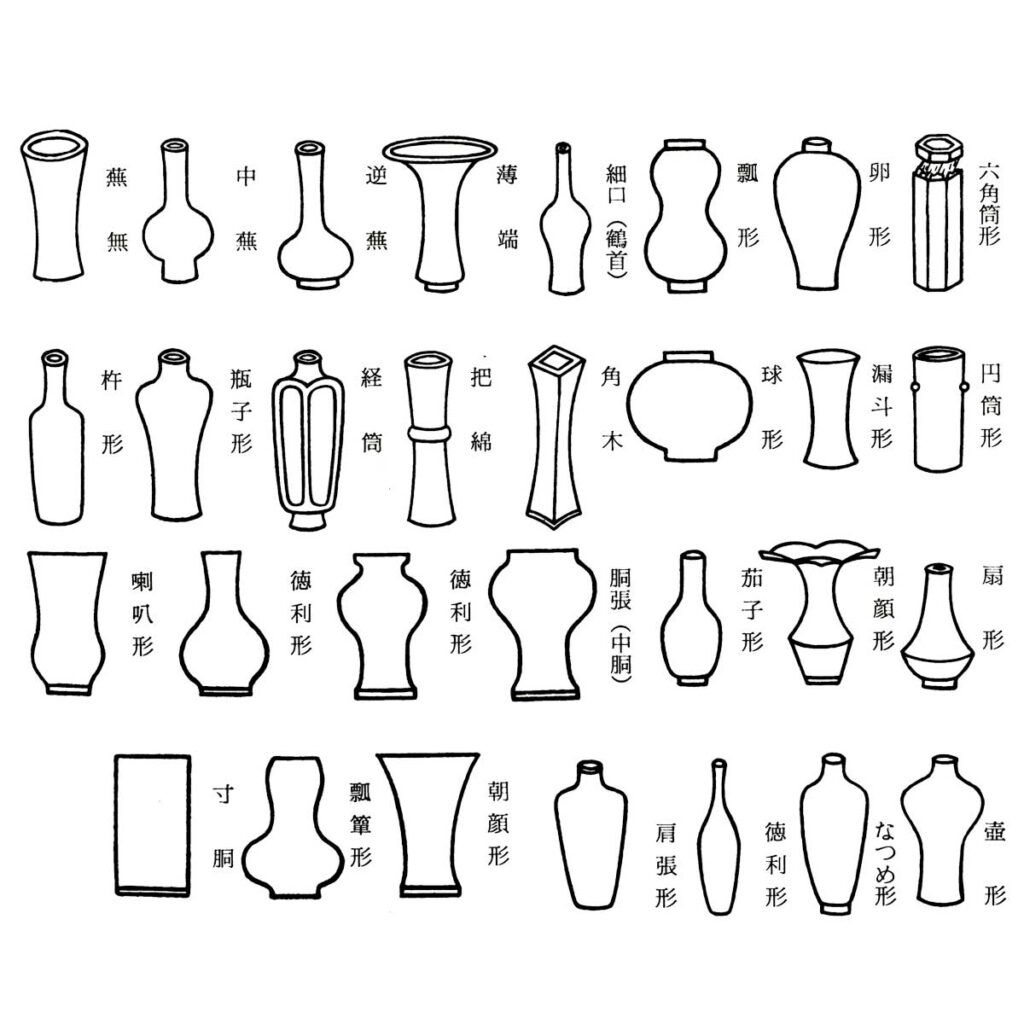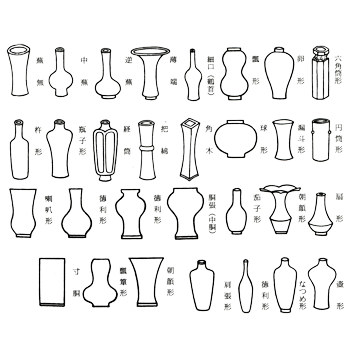
The combination of flowers and vessels has been seen since ancient times, but the vessels used were not always specific “hanaike” (flower vases). Most of them were sake bottles.
The ancient Greeks, who were the mother of Greek civilization, are said to be the earliest people to have had an excellent relationship between natural flowers and artificial vases.
The names of vases vary widely. The name “hanabin” is used as “flower vase” in the Wa Kabin Gahi, “hanagame” in the Kokinshu and later poems, and “hana-ike” and “hana-iri” in the Yamakunha, but the use of the character for “hana-ike” is rare. Today, potters and potters are called “kabin,” Chinese hobbyists are called “kabay,” flower arrangers are called “kawase,” and tea masters have been called “hanairi” (flower vase) in the Kaikki since Rikyu. The oldest type of vase is copper, followed by ceramics. Other types include wood, bamboo, and basket vessels. Since the development of pottery was localized up to the time of Rikyu, most of the vessels favored by Rikyu were mainly bronze vessels. However, according to various sources, celadon porcelain pieces were inscribed with the name “kinuta” (kinuta), which became the motto of kinuta. Later, with the development of the tea ceremony, pottery kilns sprang up in various places and produced a variety of distinctive ceramics. The taste of Rikyu’s grandson, Sotan Han, is a true reflection of this trend.
The following examples can be seen: ame zongzi, citron mouthpiece, straw mushroom, koraizutsu, old crane, folded crow’s head, arrowhead, vine neck, wooden doll, gourd, pillow, gutter mouthpiece, and inagi (monkey). Vase grades are divided into makigyo-zo, with bronze and celadon vessels being makigyo, and baskets and other vessels being sogyo. The names of ceramic vessels used in the tea ceremony are “washi,” “nezukan,” “takotsubo,” “tekine,” etc. The names “tabimakura,” “senmaki,” “tanezubo,” “okitsubo,” “tachitsubo,” “nakabura,” “kaburonashi,” and “gyakabura” are also used in the flower arrangement ceremony. The ceramic vases used in the chanoyu are mainly celadon, Kinuta, Tenryuji, Shichikan, Nabeshima, and Sanda, as well as Shozui, Sometsuke, Song Guroku, Annan, Koryomon, Holland, Bizen, Iga, Shigaraki, Raku, and other national wares. What period should we look for literature on pottery with diagrams and illustrations of flower vessels in flower arrangement? Vases for standing vases, sandware, and thin vessels from the Muromachi period (1333-1573) are based on copperware. In the field of shoka, only the Ikenobo school is old, while the Saga and other schools are only the markers of those who practiced flower arrangement after the Bunka-Bunsei period (1804-30).
Therefore, the recognition of flower vases also arose from the prosperity of these schools, and therefore, the references must be sought in later periods.



